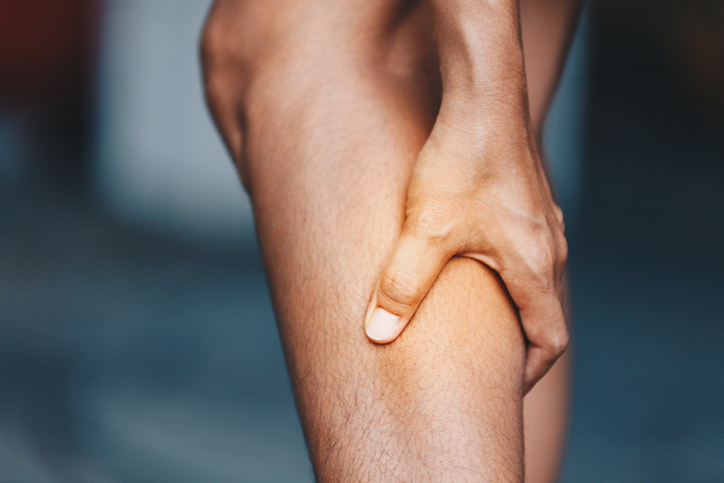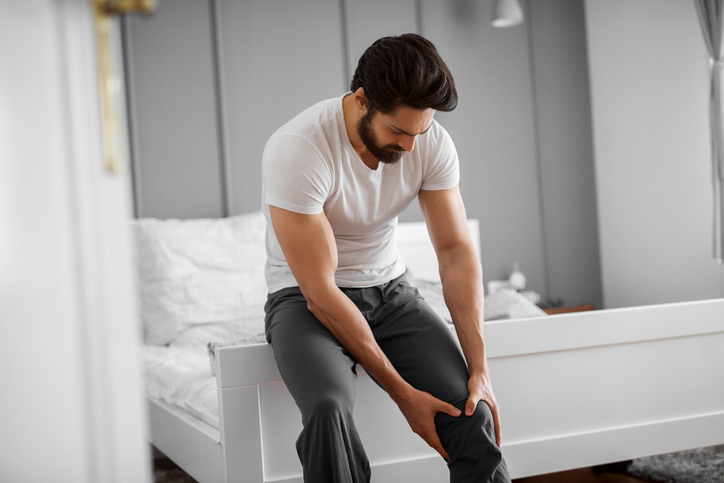
How common are leg injuries?
Minor leg injuries are common in Australia. Many leg injuries are caused by everyday wear and tear or overuse injuries, which occur often. They are also frequently caused by sports, Spinescan lists six leg injuries among the list of the top ten common injuries in sports.
They are usually split into two larger categories: overuse and acute.
What are acute leg injuries?
Acute (traumatic) injuries are caused by a direct blow, a penetrating injury, or a fall. Pain may be sudden and severe. These injuries usually need prompt medical care. They may include:
- Bruises – small blood vessels under the skin tear or rupture, often from a twist, bump or fall. It causes a black-and-blue colour that often turns colours as it heals. Usually does not need medical care
- Sprains – injuries to the ligaments that connect bone to bone and help stabilize joints
- Injuries to the tendons
- Pulled muscles or strains
- Muscle ruptures
- Broken bones or fractures- may occur when a bone is twisted, bent, jammed, struck
- directly, or used to brace against a fall.
- Dislocations- pulling or pushing bones out of the normal position
What are overuse leg injuries?
Overuse injuries occur when too much stress is placed on a joint or other tissue. This can happen when you “overdo” an activity or do the same activity over and over again.
Overuse injuries include:
- Bursitis- inflammation of the sac of fluid that cushions and lubricates the bones
- Tendinitis- inflammation, tearing, or fraying of the tough, ropy fibres that connect muscles to bones
- Hairline cracks in bones, such as stress fractures
- Shin splints- inflammation of the fibrous covering of the bone where muscle fibres are attached
- Plantar fasciitis- inflammation of the plantar fascia. This is a broad, flat ligament on the bottom of the foot
- Osgood-Schlatter disease- inflammation at the top of the shinbone where the patellar tendon attaches to a bony prominence. This is more likely to occur during rapid growth periods. The disease involves both legs about 25% of the time. It’s rarely a chronic, lifelong condition.
What are the related symptoms of Leg injuries?
There are many types of Leg injuries and all have their own symptoms.
WebMD provides a list of symptoms for each major type of leg injury.
Fractures commonly include:
- Pain
- Your leg bending at odd angles
- Trouble standing or putting weight on the injured leg
- Trouble moving your leg or bending your knee
- Swelling, bruising, or redness
Some symptoms related to sprains in the leg include:
- Pain
- A popping noise when the injury occurred
- Swelling
- Bruising
- Muscle tightness
Strains in the leg are associated with:
- Pain
- Swelling
- Muscle spasms or cramps
- Weakness
Finally, a dislocated joint is related to:
- Pain
- Swelling
- An inability to move the joint
- Also, it is likely that you will be able to recognize the joint is out of place
What are the causes of Leg injuries?
According to RehabOne, there are many causes of Leg injuries, including but not limited to:
Leg injuries are commonly caused by:
- Overuse or underuse
- Trauma or injury
- Other serious conditions
Some conditions that can present as leg pain include:
- Atherosclerosis, which is a narrowing and hardening of your arteries
- Deep vein thrombosis, which is the formation of blood clots inside your veins
- Arthritis, particularly in your knee and hip joints
- Infection of your leg bones or tissues, which is often accompanied by swelling and redness
- Nerve damage to your leg, sometimes as a result of diabetes
What help is available for Australians with Leg injuries?
The available help will depend on the severity and the cause of the injury.
If it is a mild injury, the treatment consists of pain medications and cold and hot packs. If the pain continues, you may need to take time to rest, do massages, or specialised exercises.
For fractures or broken bones, a medical professional will likely place your leg into a cast or another method of holding the bones together so they can heal. It may take several weeks for the bone to heal fully and you may need crutches or a scooter if you are unable to put pressure on your leg.
For sprains and strains, the recommended treatment is R.I.C.E. or rest, ice, compression, and elevation. Unless it does not heal in a few days, then you may need to see a doctor.
Lastly, for a dislocation, you will need to see a medical professional right away.



